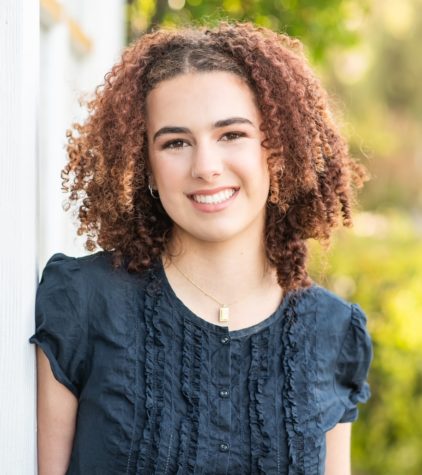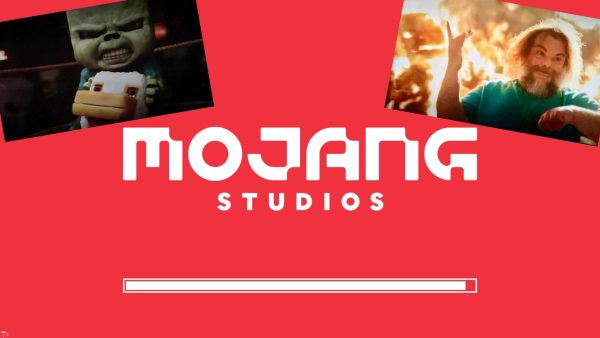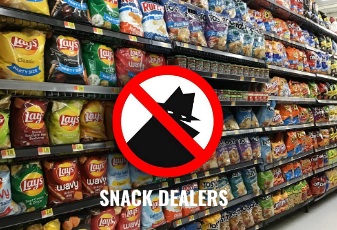The Restricted Section: The Hate U Give

The cover of Angie Thomas’ novel ‘The Hate U Give’
2021, Angie Thomas’ novel The Hate U Give was challenged multiple times for profane language and an “anti-police message.”
In 2019, the Fraternal Order of Police in Mount Pleasant, South Carolina, sought to remove The Hate U Give from the local high school’s optional reading list for freshmen. The group claimed the book to be “almost an indoctrination of distrust of police.”
In 2018, a superintendent in Katy, Texas had the book removed from every library in the school district for vulgarity and was met with uproar.
The novel was published in 2017.
A modern classic with startlingly relevant social commentary, it makes sense that certain regions and groups would dislike both the novel itself and the message it carries.
The conflict of the story is something that could be deemed as highly controversial or necessary learning, depending on the perspective.
Coming from a privileged, white perspective, I believe this to be necessary learning. No amount of experience or exposure can change the color of my skin, and therefore I will always have a different experience than Black people, who have had to deal with decades of oppression over something they cannot control.
Not once have my parents had to sit me down at a young age and tell me what to do if the police pull me over. They give me the basic instructions that I believe most parents warn their kids about when they start driving; give them your license and registration, be polite, and don’t do anything stupid. I would never stop to consider that the slightest move in front of the police could end my life. It just goes to show the vast difference between the white experience in America and the Black experience in America.
According to mappingpoliceviolence.org, Black people are 2.9 times more likely to be killed by the police in America than white people, and there were 190 total days in 2021 where the police did not kill a Black person. These statistics demonstrate the reality of the violence demonstrated in the novel, and how it goes beyond just fiction.
For a majority of my time reading the novel, I was in shock. The America described in the book and the America that I grew up in could not be more contrary. It was eye-opening to learn how someone could have a vastly different experience in the same America solely because of the color of their skin. This contributes greatly to why I feel this novel is so important. As a white person, it’s impossible to fully understand the lens through which a Black person sees America. This novel, and similar pieces of media, are the closest we can get to sharing the experience and building empathy and understanding.
This book tells the story of a high school student named Starr. She is Black at a predominantly white private school, though she lives in what is dubbed “the hood” and the “projects” throughout the novel. She often laments about seemingly living two lives, the life where she censors herself and her behavior and moves quietly through her school, and the more “real” version of her life in her neighborhood with her parents, siblings, and childhood friends.
The major focus of the novel is how Starr deals with witnessing her friend being shot and killed by a white police officer for no credible reason other than the color of his skin. She watches protests and riots break out across town in her neighborhood and life resumes unbothered at school. She struggles to walk the balance between her two lives as they both start to fall apart. Starr copes with her trauma and watches the months play out after the event, leading up to the lack of justice served for her friend, Khalil.
The story simultaneously captures the semi-normal modern teenage experience and moments of trauma and grief that cause one to grow up too fast. Khalil wasn’t the first friend that Starr had to watch die in front of her via a gunshot wound. Her childhood best friend, Natasha, was shot and killed in a drive-by shooting in their neighborhood. Starr has to privately cope with the grief from Khalil being shot and the resurfacing feeling of losing her best friend to a similar situation.
This type of protest-oriented, Black perspective media is what the world and the white population of America need, especially in the past two years. Following the killings of George Floyd, Ahmaud Arbery, Breonna Taylor, Tamir Rice, and countless others, white Americans need both a reminder and lesson that their experience will never come close to that of a Black American.
To ban this book from school districts and libraries is to strip Black people of a way to connect with white audiences and students in a time when it is crucial for such connection and understanding to occur. By banning or restricting this book, people are proving Angie Thomas’ message right, which is that systemic oppression of Black people and their stories continues every day.

Zoe Lodge is a senior and this is her second year at the Eagle Times! When she isn’t writing (for the Eagle Times, for school, or creatively), you can...





